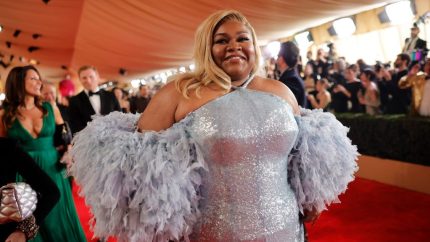Misty Copeland opens up about the ‘generational trauma’ of Black ballet dancers
Groundbreaking ballet dancer Misty Copeland continues to advocate for Black talent in the classical art form.

Ten years after Misty Copeland made history as the first Black woman to perform Odette, the lead role in the classical ballet “Swan Lake,” she is recalling the tremendous self-doubt leading up to the historic feat.
“I think about this kind of generational trauma for Black dancers that comes with that role,” she told CNN’s Chris Wallace during a recent interview. “We’ve been told, for so many decades and generations, that the swans should be white, that that’s not a role that can be played by a Black or brown woman.”
Copeland added that she worried that if her “artistic excellence” wasn’t up to someone’s standards, “maybe there won’t be another Black woman at American Ballet Theatre who is given this opportunity.”
This, she shared with Wallace, was just one of many challenging experiences she endured during her ascent in classical ballet, which included becoming the first Black principal ballet dancer at the American Ballet Theatre in 2015.
“I’ve experienced difficulties being a Black woman when you stand out,” she said.
She continued, “There were times that I was not cast in certain roles because I would stand out too much and kind of ruin the aesthetic, especially if it was a performance that was being filmed.”
One major tradition in classical ballet that Copeland has been vocal about challenging is the use of mattifying white powder on the skin.
“They make you lighten your skin,” she explained. “Over years and years of doing this, I had serious conversations with the artistic staff of ABT and our hair and makeup department. I said, ‘Well, why does that have to mean white?’ And that’s something that the conversation has evolved to kind of change what that means.”
Copeland has also been instrumental in pushing companies to start producing ballet slippers, tights, and leotards in a more diverse range of skin tone colors. Before 2020, if a Black or brown dancer wanted their ballet slippers and tights to have a nude effect, they would have to “pancake” or splotch makeup over their shoes and tights.
From sparking conversations challenging ballet’s traditional makeup and hair to lobbying for diverse ballet slipper emojis, Copeland’s experiences have inspired her to advocate tirelessly for Black and brown dancers in the classical art form.
“You shouldn’t have to have a certain body type. You shouldn’t have to have a certain color skin or be a specific age. If you have the right dedication and commitment and support – I think anyone should be able to do this,” she stressed.
Over the years, Copeland’s rise and mission to increase representation and diversity in her field have been criticized by others. Nevertheless, she told Wallace that she keeps going because of what dance means to her.
“I’ve had a transformative life changing experience by having ballet, having the arts, having live music a part of my life,” she said.
She also pushed back on being considered “the first.”
Recommended Stories
“To me, it’s not just about being the first — there have been so many Black women who have done incredible things for the ballet community, the ballet world but haven’t been acknowledged,” she told Wallace.
One such pioneer in dance was Raven Wilkenson, the first Black woman to ever dance in a major national ballet company and a mentor to Copeland.
The ballet dancer credits her “incredible” mentors for helping her “understand that being an artist is about being yourself. It’s about bringing yourself to these things, to these roles, and making them your own.”
Never miss a beat: Get our daily stories straight to your inbox with theGrio’s newsletter.








